What did you build today (Pictures) ?
-
Today finished new device:



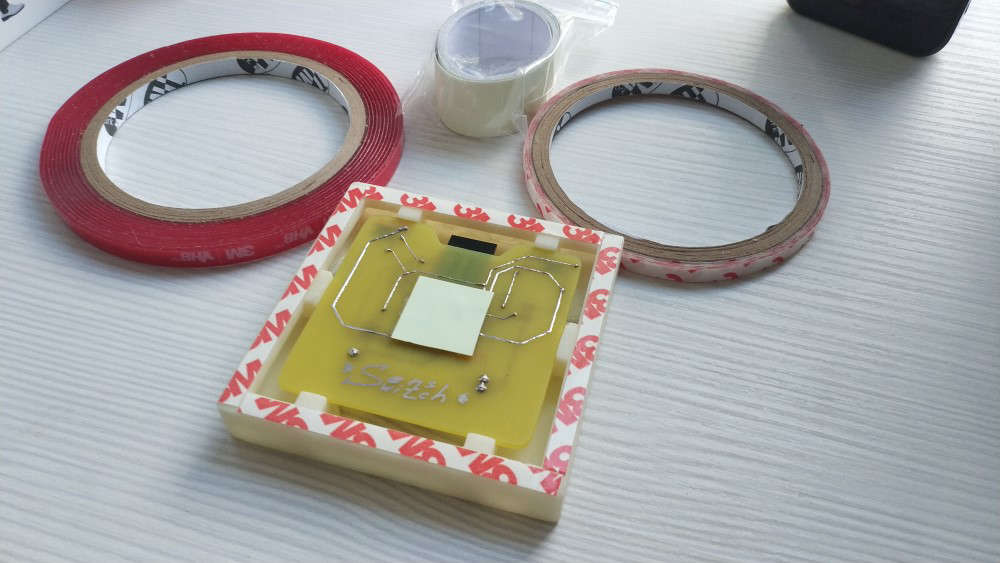
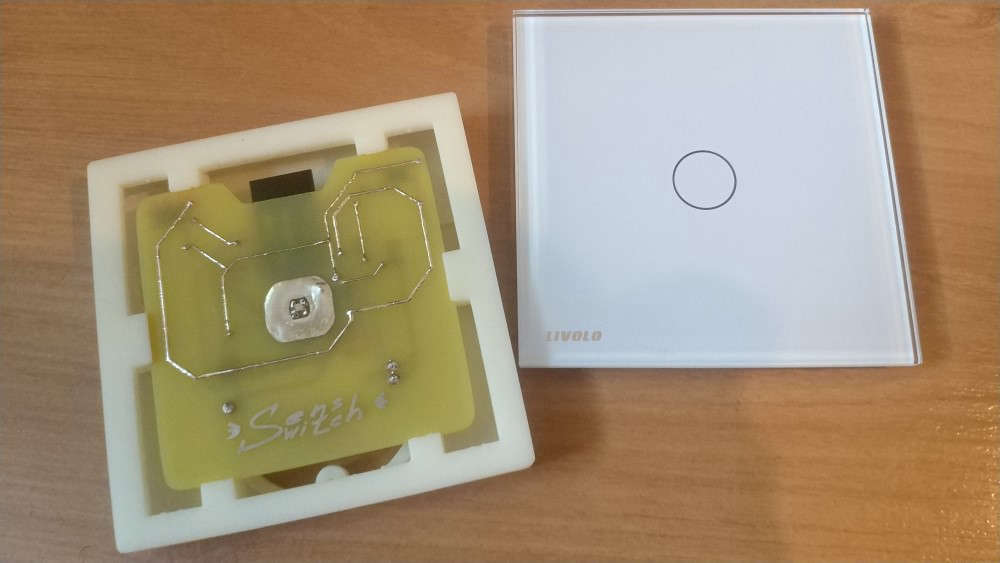

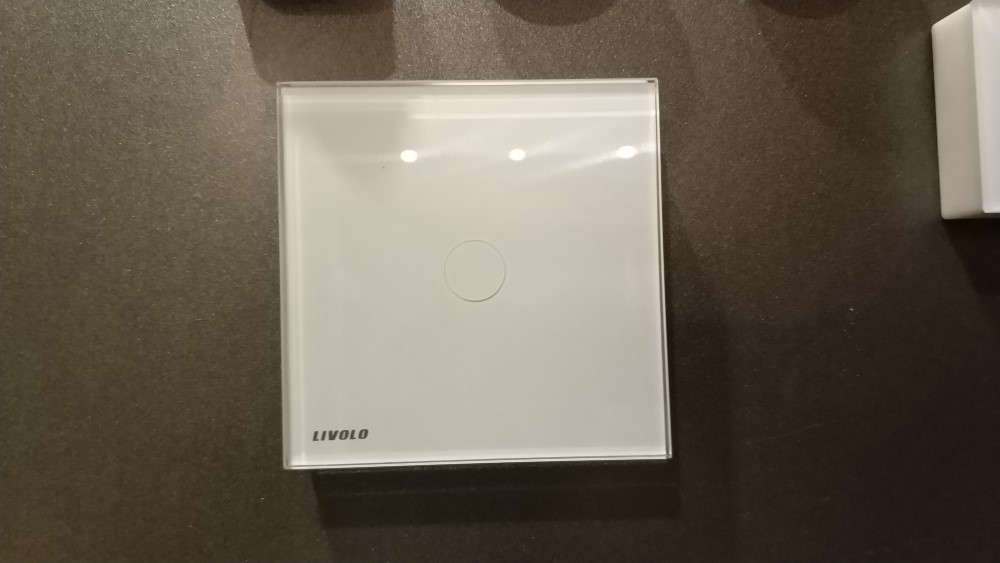



Video:
Wireless Touch Switch (nRF52832) (CR2450) with fluorescent – 02:21
— Andrew EfektaSB
-
Today.... This MQ2 gas sensor with Neopixel RGB lamp on top and a capacitive touch button under the circle mark on the front.



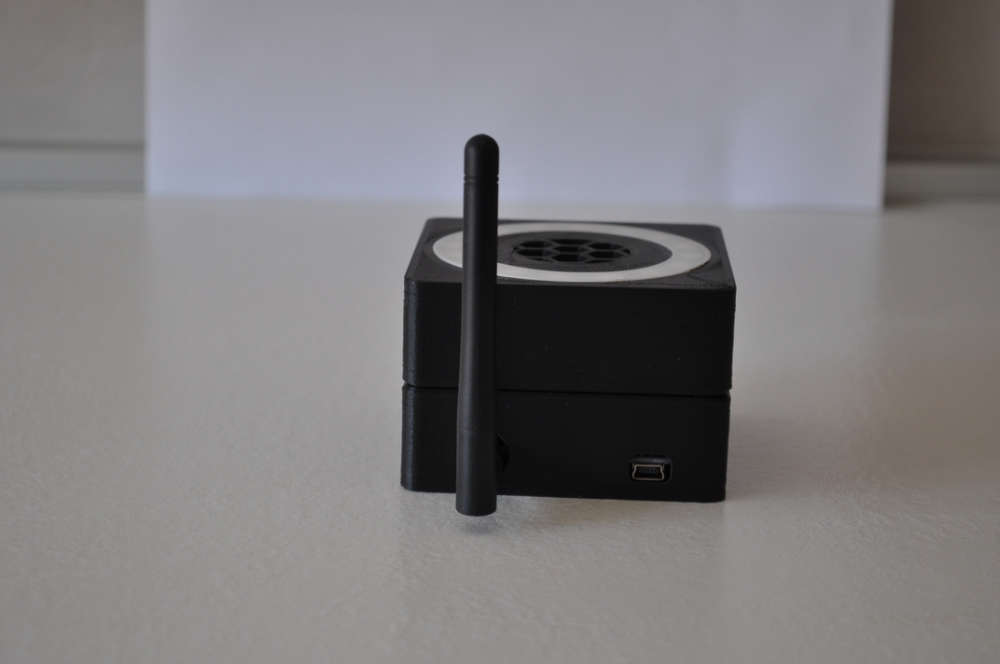


It is part of the d-diot project. The files of the 3d-printable case are available in Thingiverse.
The firmware is available here, the wiki page is under construction.
In the next weeks I will try to print it in wood... Just to increase the WAF

-
My new micro-sensor water leak ready. Powered by NRF52832-CIAA








cr2032, ... ~3μA consumption

-
Love to to watch all you creative designs

-
Pro version of water leak sensor, for very very hard to reach and remote places :). Version with amplifier.






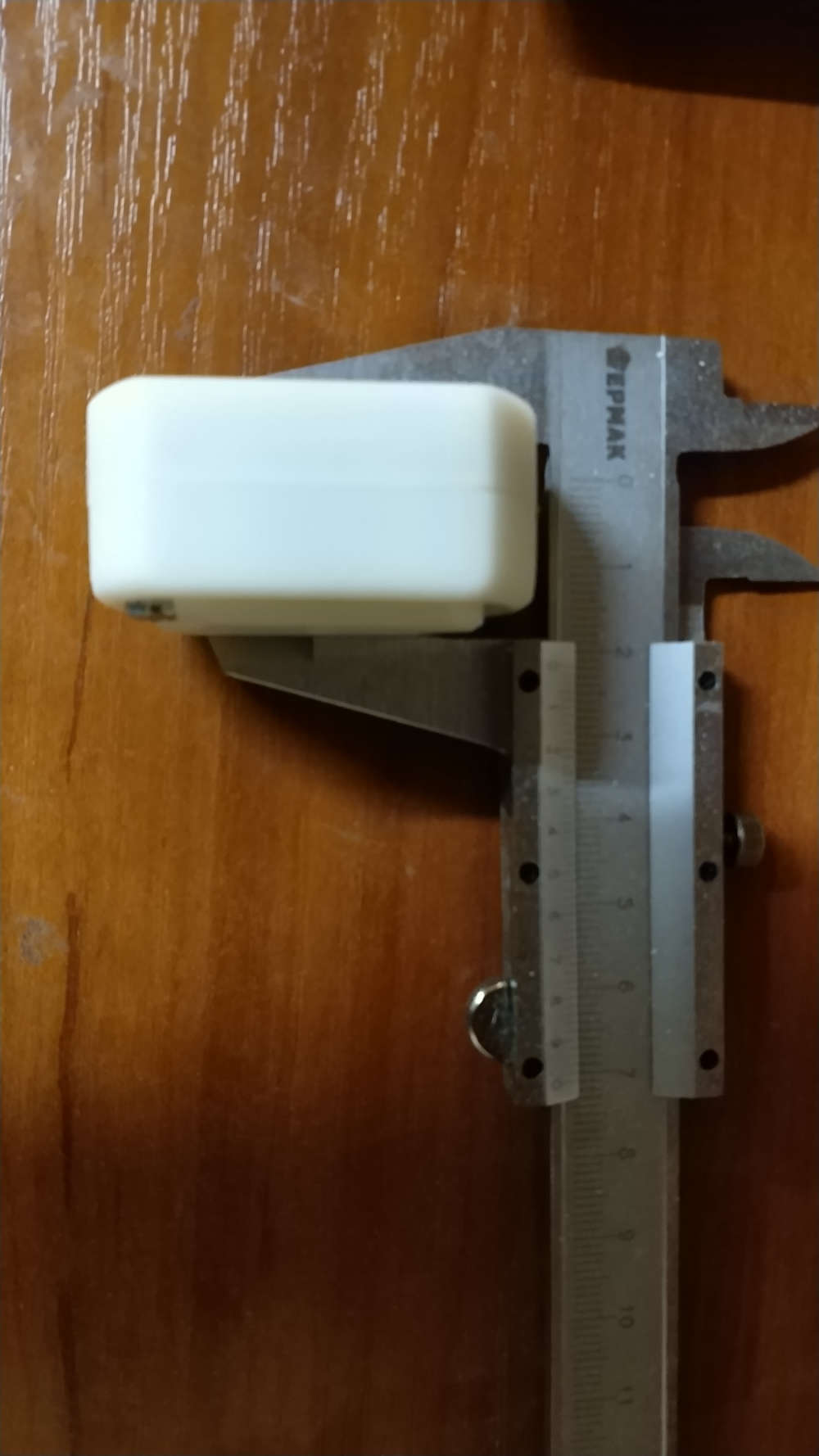
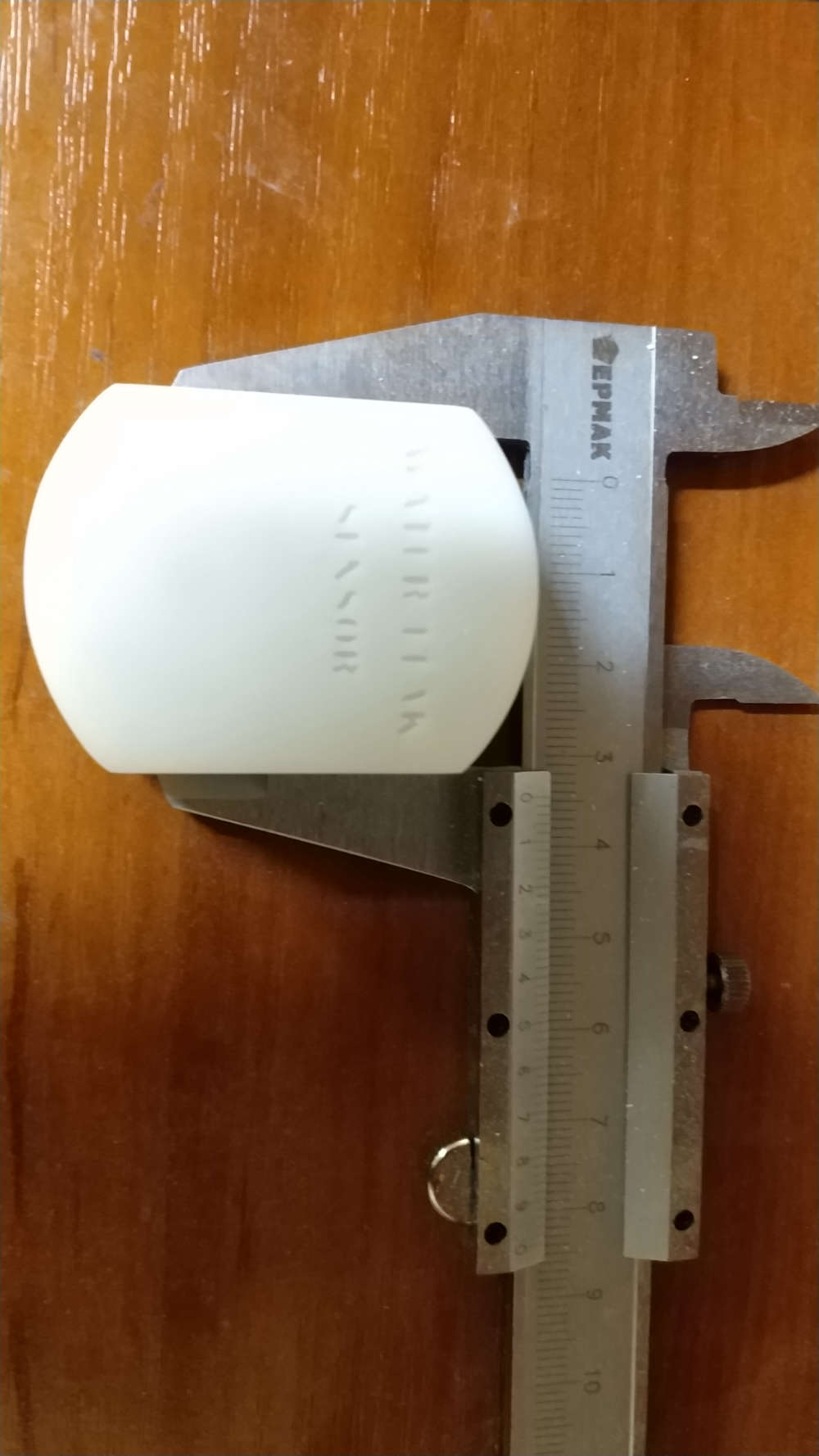

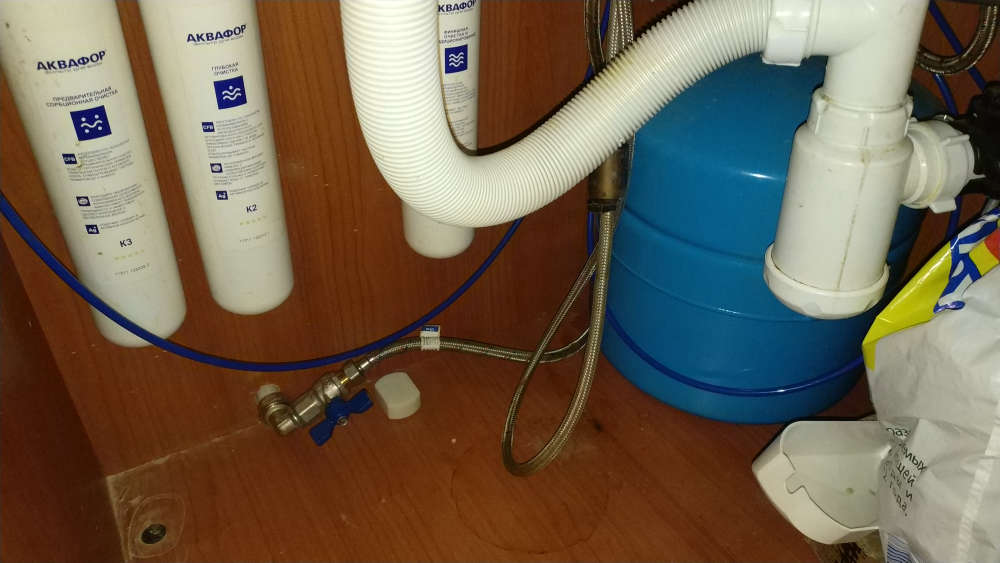






-
@berkseo what's the range improvement with amplifier ?
From my experience with nrf24 the amplifier + ceramic antenna was not giving great results.
-
@nca78 said in What did you build today (Pictures) ?:
what's the range improvement with amplifier ?
From my experience with nrf24 the amplifier + ceramic antenna was not giving great results.A few months ago, when testing, I received about 200 meters of stabilized power from the power bank. While this device was tested for 30 metres. There are problems with receiving the delivery confirmation, the device is guaranteed to transmit, but does not receive the delivery confirmation(sometimes). I think it's linked to my gateway, it has the usual radio module nrf24l01+. Of course we are talking about dc-dc-mode

-
I do not want to be too offensive, but it seems to me as if your skills in electronics and 3D-printing is way better developed than your trust in the plumbing

Now for the serious part: how often do you experience water leaks? And how long do the batteries in this design last?
Boozz
-
@boozz serious water leak heppened once in 40 years
-
@gohan
I was referring to @berkseo 's situation and images/examples. I just wondered why this person would put this amount of effort in creating a device that would probably not be functional at the moment it should be functional. I'm just thinking about corrosion of the pcb, a drained battery, change of properties of the 'sensor' due to time-effects etc.
Do not misunderstand me: I'm absolutely enthousiastic about this device (and I'm impressed by how small it is and the design), but I'm a bit concerned about the effects that could negatively affect the behaviour of it.
-
@boozz said in What did you build today (Pictures) ?:
@gohan
I was referring to @berkseo 's situation and images/examples. I just wondered why this person would put this amount of effort in creating a device that would probably not be functional at the moment it should be functional. I'm just thinking about corrosion of the pcb, a drained battery, change of properties of the 'sensor' due to time-effects etc.
Do not misunderstand me: I'm absolutely enthousiastic about this device (and I'm impressed by how small it is and the design), but I'm a bit concerned about the effects that could negatively affect the behaviour of it.You can see on the picture he already had a leak under his kitchen sink

And in some countries pipes installations are not very reliable, for example yesterday evening my dishwasher emptied on the floor because the workers did not glue the PVC pipe angle so it went away. Would have love to be warned at the first drops instead of realizing it much later when walking in water in the middle of the kitchen. I also had problem with drinkable water fountain not stopping when tank was full and emptying the 20l bottle on the floor, leaks of sinks and bathtub in the bathrooms in previous apartment, etc etc
So there's truly a "market" for those sensors, they could also be slightly modified to make rain detection instead and warn you if rain is coming and some windows are still opened (very useful here in tropical weather when you can switch from sunny to tropical rain in a mater of minutes).And if you use the low power comparator of the nrf5 it uses only a few uA in sleep mode, easily detects a bit of water between the 2 contacts and can last for 1-2 years on button cell.
-
@nca78 I suspect what @boozz is referring to is not the functionality but the direct effect of water on the device.
Pretty sure a pair of threaded socket bolts could be swapped for the cover screws and permit wall mounting on a couple of threaded SS electrodes to solve it though, and it would still make for a very compact and unobtrusive arrangement.
-
I think very useful device.
Stainless screw like detectors - no corrosion.
And all the time this device sits in dry area - no corrosion.
But software must call controller ( with battery level for example ) sometimes, say one per a day, to inform it is alive.
And if controller does not receive this message - sends alert.
I am using this for all my nodes - very easy in Domoticz.
If node dies, Domoticz send me e-mail ( and SMS ) with information.And 40 years with this hoses for example ?

Try it .....
-
@kimot I followed your logic until you suggested 40 years in the future with presumably failed wash hand basin umbillicals..
-
@berkseo I'm sorry if I can, but what kind of sensor are you using to detect water ?? I would like to do something like that but with an Arduino pro !!
-
@boozz A leak of water in my memory occurred two or three times. Yes, this is not a common problem in the modern world. But sometimes it is enough once. And here it is important how this leakage will be quickly detected and, accordingly, the source of water supply will be blocked. And one more thing: insurance can not cover everything. One situation is when it’s a country house, but for example in Moscow I live in an apartment on the 6th floor, that is, there are 5 floors below with apartments, and I may have to pay for repairs in these apartments.
Now I have three sensor options: on a cr2032 battery, on a cr2477 battery, and on a 2 / AA (14250) battery with an amplifier.
The devices consume 3 micro amperes in a dream
 , on conventional radio modules they consume 7–9 milliamperes while the transmission is running, for modules with an amplifier of 24–26 milliamperes, and I can programmatically decide when I should turn on the amplifier.
, on conventional radio modules they consume 7–9 milliamperes while the transmission is running, for modules with an amplifier of 24–26 milliamperes, and I can programmatically decide when I should turn on the amplifier.


-
@boozz It was just a photo session in various locations :).
The pcb, of course, will be coated with acrylic varnish. Stainless steel contacts are used. Conclusions do not have direct contact with the ground, there is a gap of about 0.5-1mm. Button holes are made from below, but look at how it is done in the photo. Well and places where leakage is possible, usually should not be wet, otherwise a mold and td. If there is moisture, then it is somehow better to eliminate :).

-
@sindrome73 said in What did you build today (Pictures) ?:
I'm sorry if I can, but what kind of sensor are you using to detect water ?? I would like to do something like that but with an Arduino pro !!
Used by SN74LVC1G00. Recently I was asked for this scheme in myssensor_rus telegram-chat. I drew it by hand in PAINT, I can offer it to you. I apologize, but nevertheless it is a scheme


-
@zboblamont said in What did you build today (Pictures) ?:
umbillicals
It is rubber hoses with metal braiding.
But rubber degrades and this equipment is the most common cause of water leakage.
-
@berkseo thanks for the scheme. but therefore don't use a sensor ?? i'm sorry noni and clear how do you detect the presence of water ...
-
@sindrome73 the sensor is the two screws. Without water, the elevtrical between the screws is very high. With water, the electrical resistance is lower.
-
@mfalkvidd ok now I understand, and then commands an Arduino or other. thank you
-
@kimot The elastomers used are resilient and will last decades from new, never seen one burst yet. Most folks remodel bathrooms every 5-10-20 years and should replace these at the same time, which was why I chuckled at the 40 years.
With the technology and battery longevitity available nowadays, they are certainly a handy device to have where problems have occured or may.
-
@berkseo
Clever idea to use SN74LVC1G00 as while both inputs are same voltage it only consume ICC = 10uA (10 mircoA) in whole voltage range 1.65V -5,5V
-
@bjacobse said in What did you build today (Pictures) ?:
Clever idea to use SN74LVC1G00 as while both inputs are same voltage it only consume ICC = 10uA (10 mircoA) in whole voltage range 1.65V -5,5V
Power consumption of the entire device in a sleep - less than 3 mircoA.
-
@bjacobse said in What did you build today (Pictures) ?:
@berkseo
Clever idea to use SN74LVC1G00 as while both inputs are same voltage it only consume ICC = 10uA (10 mircoA) in whole voltage range 1.65V -5,5VNot when when you have a low power comparator available that runs with only 0.5µA...
-
Wireless expansion module for very cheap soil moisture sensor from Aliexpress



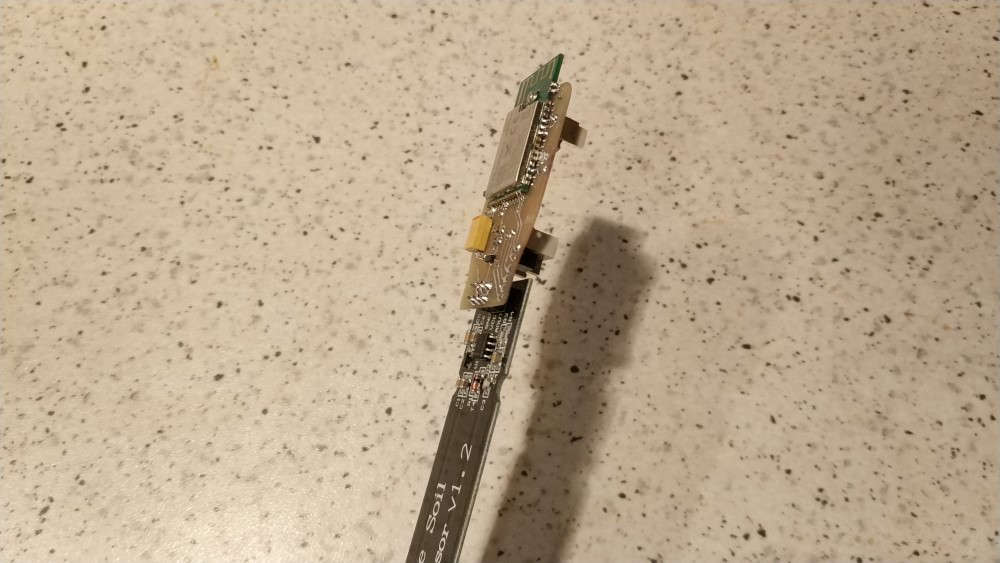
MySensors | Wireless Module for Capacitive Soil Moisture Sensor v1.2 – 05:12
— Andrew EfektaSB
-
Finally the round-tuit UPS got built after the last power cut clobbered the Controller/Gateway system, lesson learned...
Meanwell AD-55A, 7.2Ah Acid gel battery, two usb 5v buck converters, a spare socket for raw volts, and a 15 euro IP66 box from the local shops.. Some drilling and filing to the lid, couple of brackets, spare bolts, banding, soldering and hot glue...
A bit bulky, but disappears in a void under the stairs, two tiny drill holes let the buck converter leds shine threw...
No monitoring as yet, but sailed through a power cut this morning and the Pi didn't skip a beat.. First up is the Pi's RTC then can put the cover back on the Controller...
![0_1563789698294_20190721_074129[1].jpg](/assets/uploads/files/1563789705402-20190721_074129-1-resized.jpg)
![0_1563789869238_20190722_001114[1].jpg](/assets/uploads/files/1563789875508-20190722_001114-1-resized.jpg)
-
@zboblamont is the battery and switch mode psu just in parallel? Or do you have a switchover / charge circuitry?
-
@tbowmo The Meanwell AD-55A is a purpose made 12v UPS type with all controls onboard. There is an optional version with monitoring brought out to a connector block, but I couldn't find one.
The photo angle is misleading - Channel 1 +/- is to load, Channel 2 +/- is trickle charge to battery, power failure switches seamlessly to the battery as source..
It's a fairly comprehensive arrangement with an array of safety features including battery protection, eg - If during power failure you disconnect the battery, it's reconnection will not restore load power, and resets only on mains supply.
Case ventilation made using a metal bracket with a matrix of holes as a drill through template so it looks neat, but as the PSU barely gets warm to the touch it proved to be overkill.
-
@zboblamont Do you have any more info on this? Components and schematic? I am looking to do this as well as Florida is now fully into storm season.
-
@wergeld Sure, but this is where I first read about it as part of a comparative link text when I was trying to decide on a UPS after a series of outages (frequent out here in the sticks).
The dual buck converters were the only real variation (in case one blew). Following kind advice after querying buck converters on this forum, this is the type I ordered but off eBay, but this is very similar layout... link text
I should explain that I would have gone for a commercial UPS had a decent USB supply been quoted, but the reality is that for most the USB is of secondary consideration to backup mains...
I gets interesting when you consider the actual Ah capacity before the battery low cutout operates, I reckon well in excess of 12 hours...
Have fun...
-
not with mysensors, but could have been: CNY70 water sensor meter (rotating wheel) with extended wifi range, the heart of it is a Particle Photon pushing to domoticz

-
Today I finished printing the case. Turned out to node with sensor bme280 and e-ink display, running on nRF52840 from SKYLAB
In one of the photos still have the sensor with bme280 working on nrf52840 from EBYTE. ...This is the previous project.
upd.






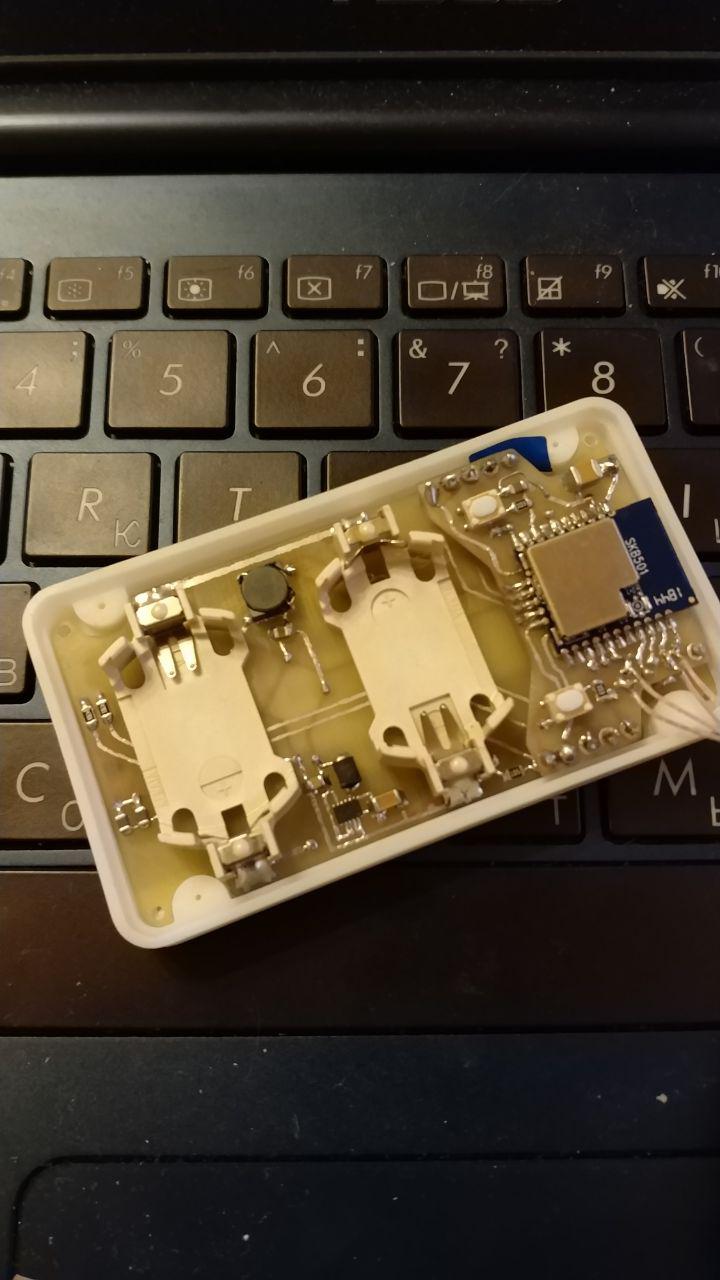

-
I have soldered the first sample of "xRoom" board.
TODO: testing and detail description of the project))

-
@kalina That is some excellent solder work. Last time i tried to do SMD work it ended up being 110% solder, 5% PCB, and 0% component at the end.
-
I didn't build this myself, but I did create the code. It's a MySensors CO2 sensor that is part of a 'privacy friendly smart home of the future' which will be launched later this year.

It was made by artist and jeweler Dinie Besems. All her creations feature small 'skirts' that you can lift to see the data, or cover up the screen if you have visitors and don't want them to immediately see your data.
-
Etched and soldered a new gateway after the original one I had failed.
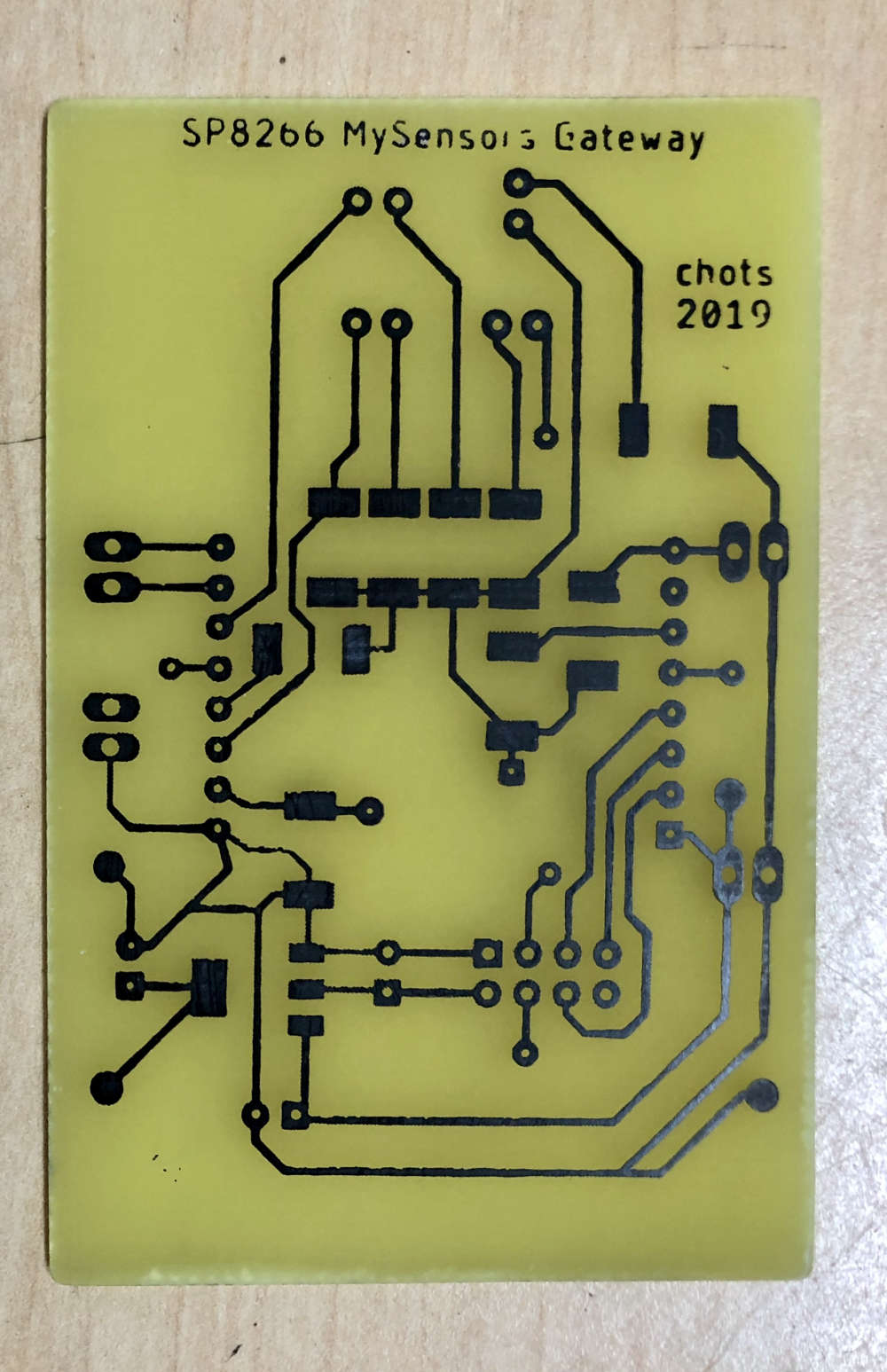



-
Meet Janus project, a premium USB dongle by Tekka and me

Dual RF gateway with external antennas.
- nrf52840 with 20dB PA + SMA connector. So it can be compatible with MySensors, and/or zigbee..
- rfm69hcw/rfm95 long range + SMA connector . module has all DIO pins routed for sw driver optimizations.
- reset button
- user button
- RGB led
- high PSRR RF/analog 700mA LDO
- usb protected
- 4layers board
- enclosure size : 52x21 (thickness 11mm). compact!
Enclosure is just a quick proto, I'll improve quality, or I would like to try online multijet service, I'm curious



It's very recommended, for better performance, to have some distance between antennas.
So, for example, I'll use a shorter antenna (without cable) for 2.4ghz, and a "remote" antenna (with a cable) for 433/868/905Mhz, so it can be used with different kind of antennas.We choosed external antennas, because
- versatile use
- better range especially when dongle is close to lot of stuff which could affect range in case of a pcb antennas
-
@scalz ohh! Where can I order one?
-
Wow @scalz that's a badass gateway dongle, any pictures of the inside ?
Do we have more chances to see that becoming available, than HALO and Aeos ?
-
thx for interests guys

I'm just not sure if there would be enough interest for me to produce. I've not really thought about it! It's the first board of the batch.I call it a premium dongle because
- it's 4layers. It's just a little bit more expensive than 2layers. But quality is a lot increased (better impedance, full gnd plane, better routing etc). It's also recommended by lot of rf module manufacturers for topnotch perf
- I uses the high quality BT840XE module. As you know, it's a well documented and known module, and it's CE/FCC (better, as it includes a 20dB PA).
Actually I just use a few pins on edges, and 18 pads under it..
I had the choice to use this module, or to design mine with a frontend, but for once, I decided to go "simple" for a quick debug. And the price difference vs homemade, maybe +10€, is worth it imho, time saver, and I don't mind I just need one!
Why did I make it? Because I can and would be pity to deprive myself

And we can have a nice and reliable dongle for the team, just in case.You're right I have others hobby projects, they're not dead..

- just lost a bit of interest on Aeos release, I agree on this, because I prefer subghz for mysensors, and would like to keep 2.4 for others protocols.
- Halo is not dead, actually it's one my favorite. I just need to find a way to include Janus in my "serverless" project which is mostly ethernet based (I made a full webapp, that I'm porting to true native crossplatform sw, android phone+tv, windows, linux, for better experience). "serverless" meaning optional rpi/computer
Oki, I'll post others pics soon.
-
This evening I assembled another dongle (and a few other boards).
@nca78 as you asked, here is a pic during tests. Tiny dual rf dongle board, isn't it
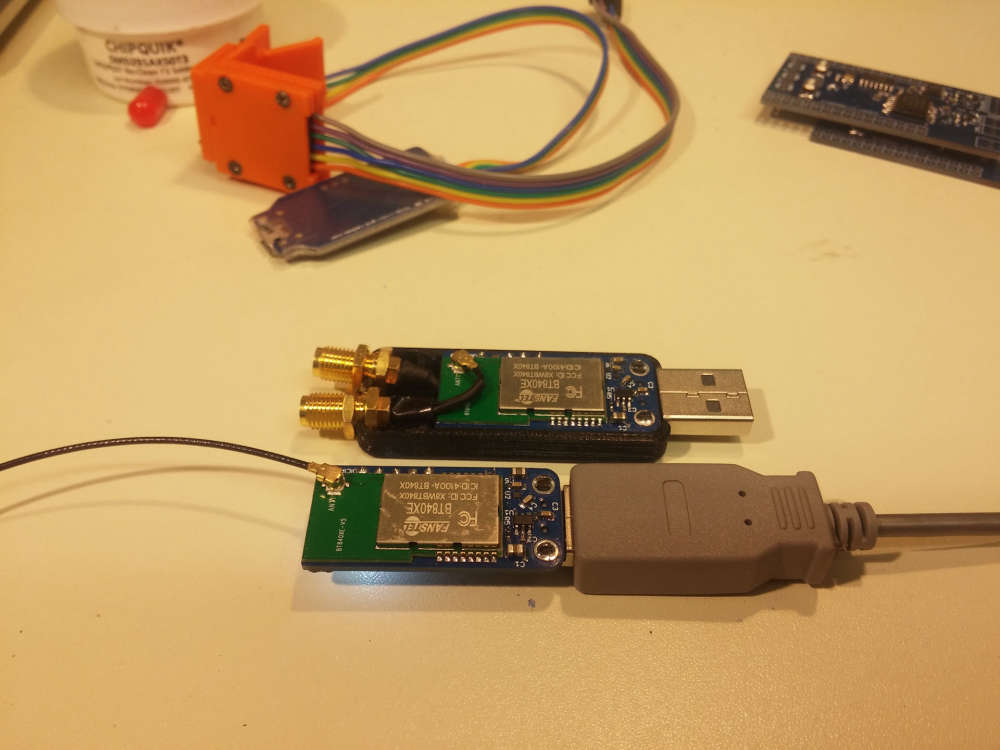


-
@scalz How do you plan to use your dongle? Just as coordinator? or only as a gateway mysensors? Have you tried using it as a combo? zigbee quite unceremoniously uses the resources of the mcu.
-
@scalz said in What did you build today (Pictures) ?:
This evening I assembled another dongle (and a few other boards).
@nca78 as you asked, here is a pic during tests. Tiny dual rf dongle board, isn't itThis customization boards adafruit? I've customized the Board Sandeep Mistry.

-
Air particulate sensor.
BTW, solder fumes seem to be bad for you........


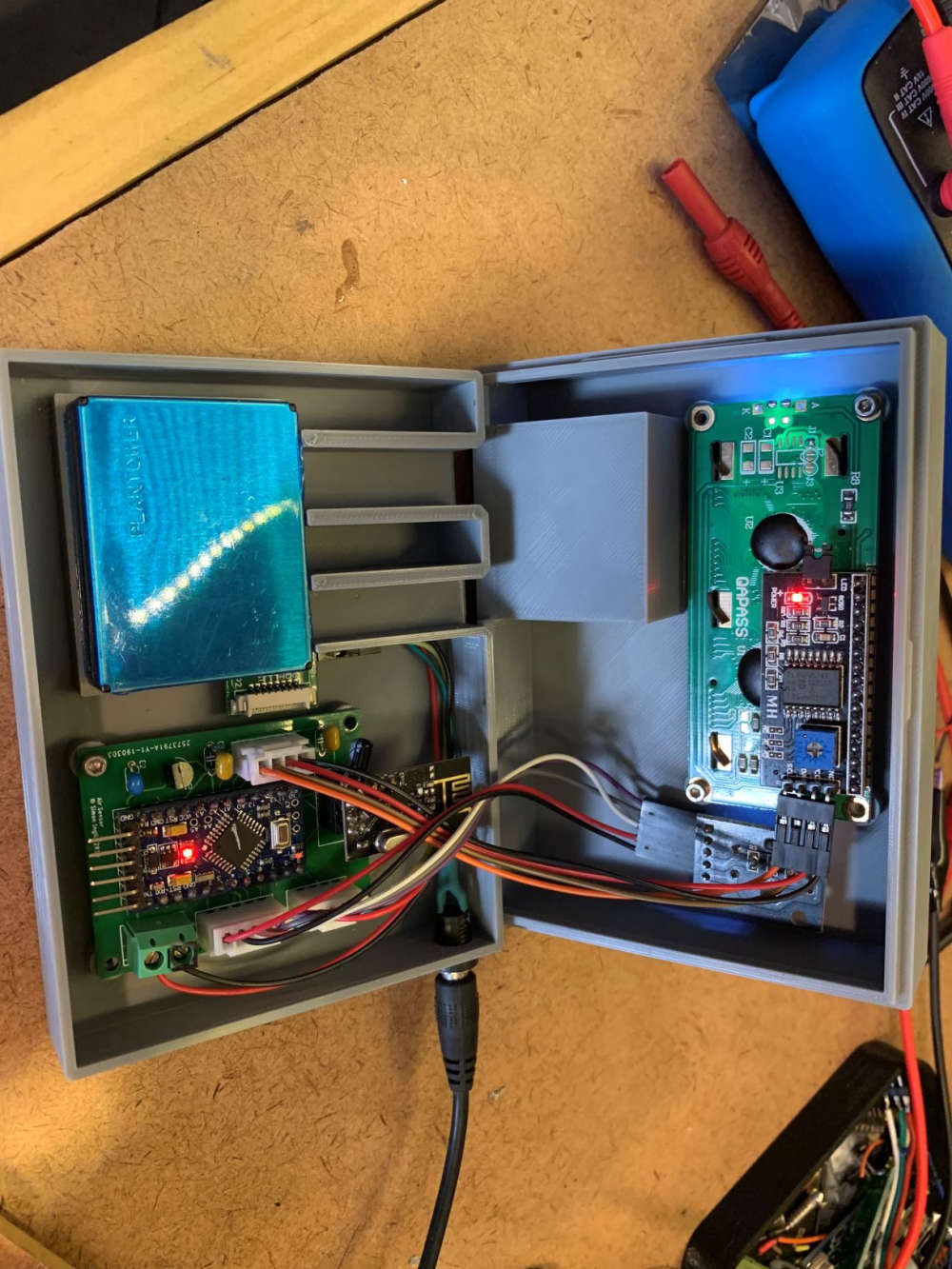
-
- like I said, MySensors bridge, combo . Yes I know about resources.
Note: zigbee is out of MySensors scope (not arduino code), so for the moment some ideas and POCs will be local, not making money no ETA, still lot of WIPs and the daily job! - yes.
- like I said, MySensors bridge, combo . Yes I know about resources.
-
Modified a laser filament sensor (pat9125, used with Prusa mk3) to be used with an ESP32.
Maybe I will use it as a filament stuck sensor with octoprint. Or a filament meter?
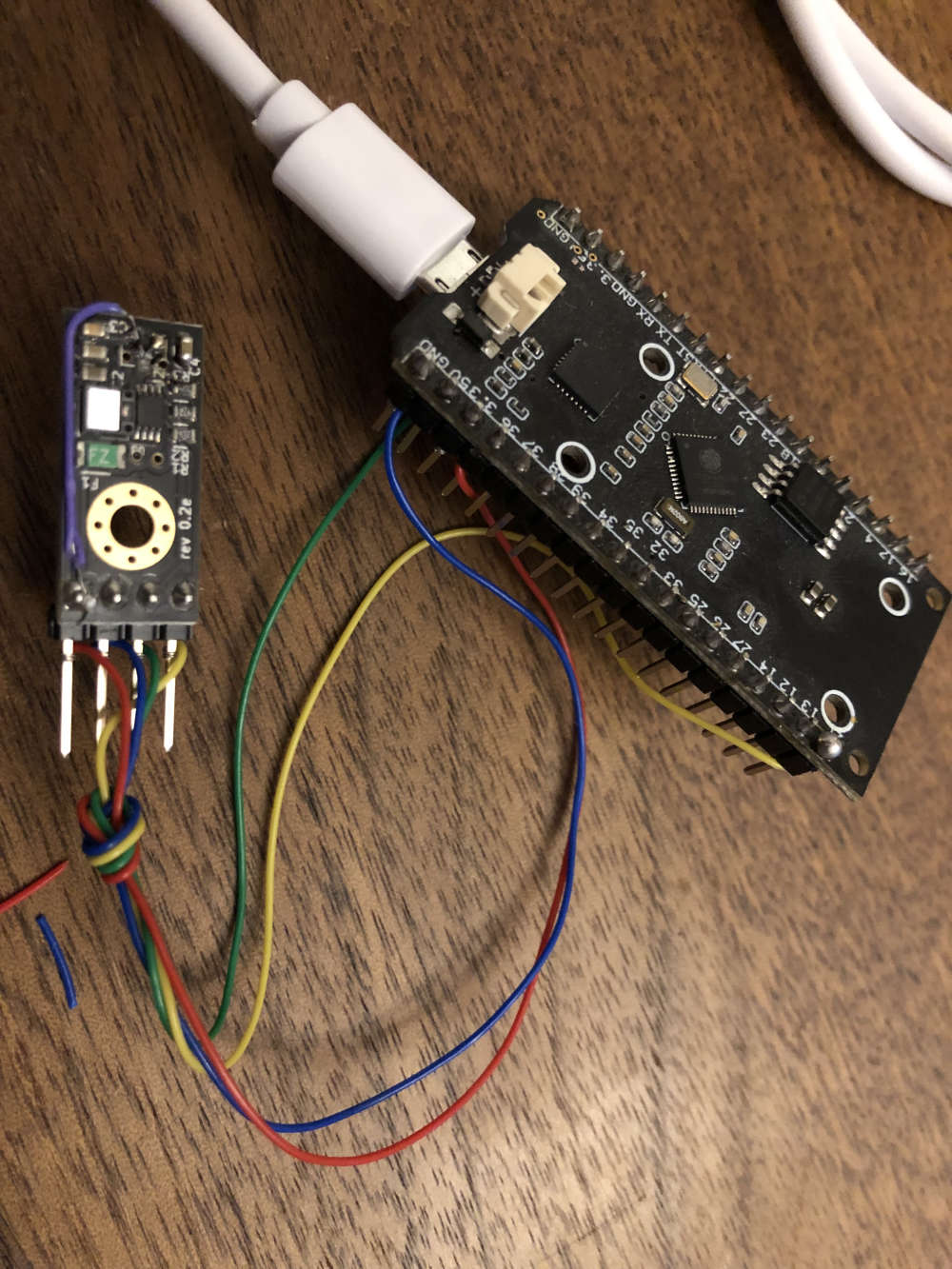
-
Very first attempt to solder smd components on pcb with hot air soldering station. lots of mistakes but i m learning...


-
First of the winter projects done, just the programming to finish and replacement temperature chips to get (broke the legs off both DS18B20s through clumsiness).
With mains/battery backup and RTC, it will record boiler start/stop and run times as well as feed/return temperatures, and as an aside the inevitable power cuts which plague this part of the world.
The MCU plugs into a socketed backplane hot-glued to the back of the box should removal prove necessary, but quite pleased it is sturdy and all fitted into a slim 25mm deep standard (cheap) box.
![0_1572107113418_20191026_182803[1].jpg](/assets/uploads/files/1572107121265-20191026_182803-1-resized.jpg)
-
My brand new device on nRF52840. It is a light and shock(vibration) sensor.
Two sensors are used, max44009 light sensor (1 ua) and lis2dw accelerometer (1 ua).
The light sensor measures in Lux.
The shock sensor has five levels of sensitivity.
Two modes of operation: main (working) mode and command reception mode.
The sensor accepts settings: the interval of sending data from the light sensor (in minutes), sending recalculated light data from Lux to watts per meter squared(on/off), the sensitivity level of the shock sensor(5 levels, 1 to 5)
Depending on which sensors are installed on the PCB, it can be used only as a light sensor, only as a shock sensor or both.
In the near future the project will be posted on openhardware.io

video (inside view of the sensor, an example of working with a smart home, an example of setting): - https://youtu.be/I2ywIxp-RsE
-
@berkseo this would also be good for monitoring when the trash cans get picked up by the garbage truck. If it has enough range that is. Of course that wouldn't apply to high rise dwellers, but for people in houses it would be a nice perk.
-
working on GPIO MySensors Gateway


-
An updated version of my temperature and humidity sensor with e-ink. Now on nRF52840. Now it is not a module but a device in the case.
Replaced temperature sensor sht20 -- > > si7020
Added accelerometer.In the near future the project will be posted updated on the website openhardware.io










Video: https://youtu.be/T66y83lF-xg
-
Amazing!

The case is 3d printable?
-
@franz-unix
This is made on SLA printer, but should normally print on FDM
-
@pihome just realized one big blunder, The NSS, MOSI and SCK are not 5V tolerant on RFM69. hence need level converter

i was wondering is there any one ic can can do instead i have to used BSS138 per pin.
-
@berkseo I'm quite interested in a schematic view showing how the epaper gets wired up, because priced just by itself epaper seems like an affordable solution.
or
On the other hand, if one has to rely on adafruit or similar for an epaper breakout board to make use of it, the effective price jumps by around 5-6x or so.
-
@neverdie you can use this and this as a reference. No need to buy ready breakout board, if you know how to trace your own.
-
https://github.com/dkjonas/Wavin-AHC-9000-mqtt
iron and toner transfer, then etched and soldered and finally acrylic spray on cobber so it won't corrode
-
Hello, as it was getting seriously off topic, I moved the discussion related to SLA printing of enclosure to here :
https://forum.mysensors.org/topic/10815/printing-enclosures-with-sla-printersFeel free to suggest a better title.
-
I've had surprisingly good luck buying cheap parts from Ali-express, but not this time. I bought an NRF52832 iBeacon that supposedly had an SHT30 temperature sensor and KX022 accelerometer. When the parts arrived, neither of those parts were populated. All the beacon has is a push button.
I was able to program it to work with MySensors, however. With only SWIO and SWCLK (no txt out), I took @scalz advice (in another topic) and used a J-Link EDU Mini so I could use the RTT app to get printf style debugging. That worked nicely and I learned a new tool.
Perhaps I can use the iBeacon button for a remote.

-
Yesterday I finished my new project. This is motion sensor (S16-L201D) + light sensor (MAX44009) + temperature and humidity sensor (SI7020). Рowered by nRF52840.





..upd
video - https://youtu.be/cbJYam4jo2g
-
Another 8x8 matrix based display...
This is not a real project, just a try to hide the LEDs for better WAF.
Print still needs some impovements, but from a little distance you can't see the details.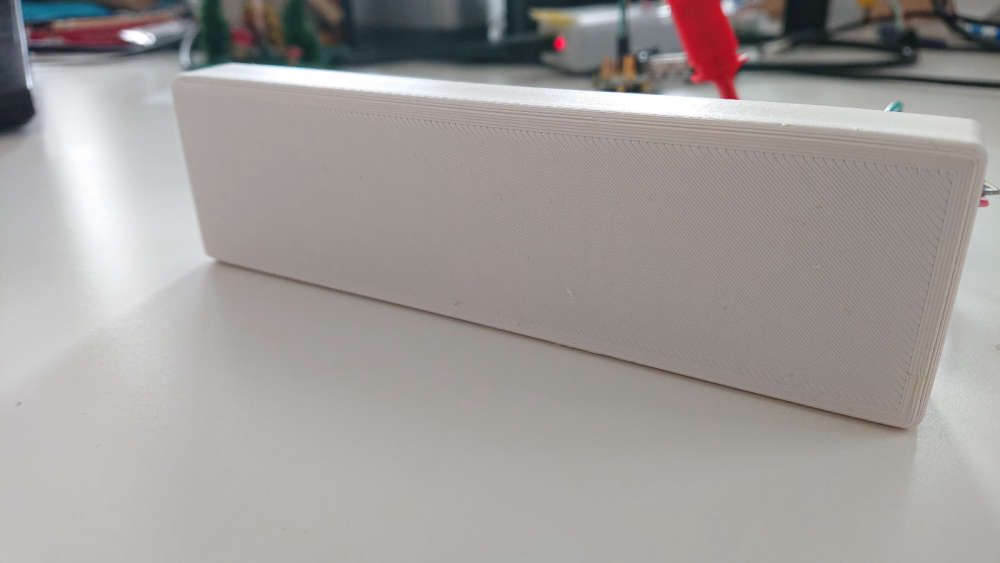

-
My new project is finished today and put to the tests. This is a continuation of my other project - Wireless Module for Capacitive Soil Moisture Sensor v1.2.

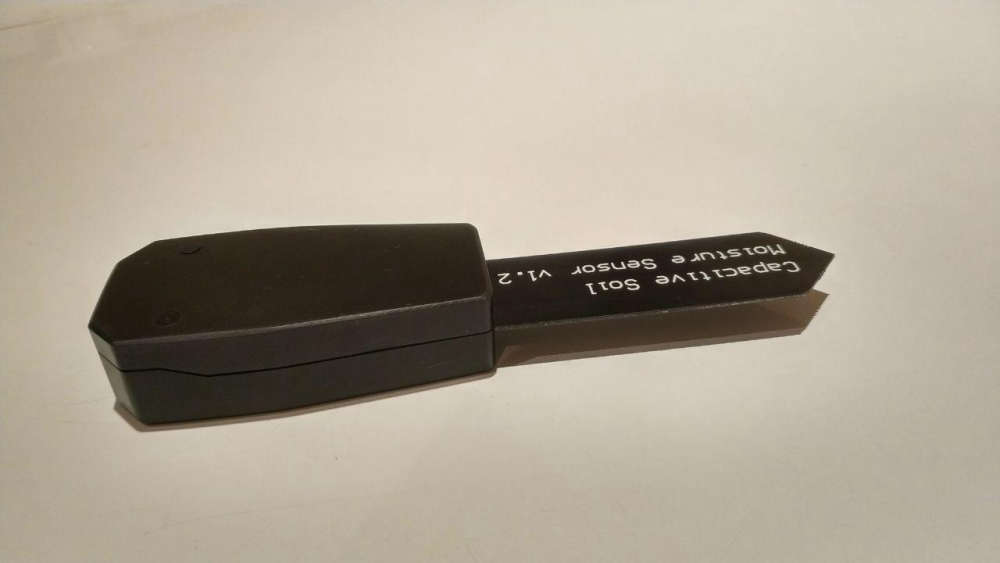
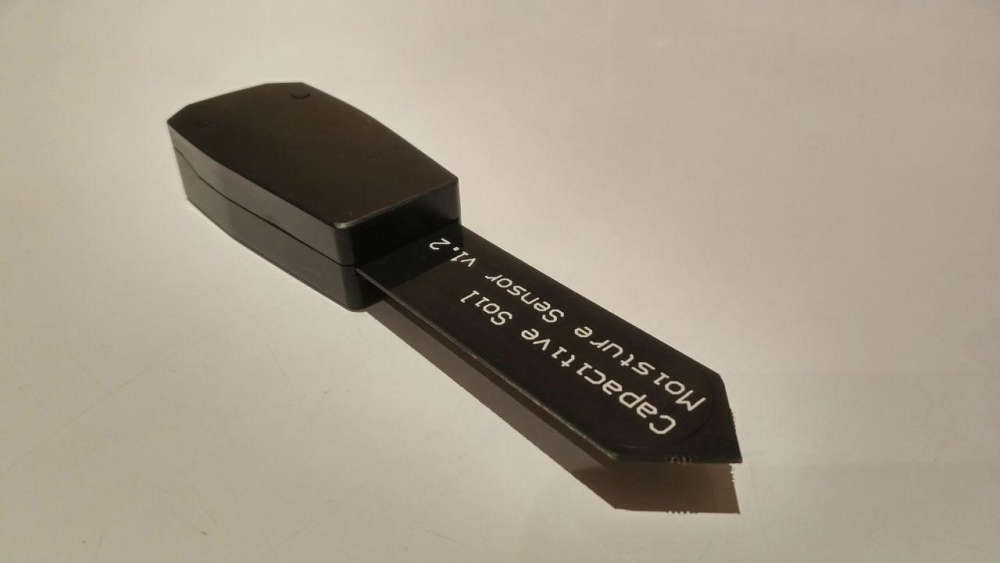


video: https://youtu.be/2HM0y-D7QNo
-
Wow. All these recent creations are so professional. Really nice!
-
Another project of mine, the second revision is finished today and put to the test. This is an encoder with accelerometer, powered by nRF52811 chip (datasheet).






-
@berkseo Cool!
-
@neverdie Thanks for rating. Especially pleased, so as nRF52 for me began with Your those on this forum.
-
@berkseo nice piece! Do you mean accelerometer for an encoder, or a physical one? And if the latter, what for is it supposed to be used?
-
@monte said in What did you build today (Pictures) ?:
nice piece! Do you mean accelerometer for an encoder, or a physical one? And if the latter, what for is it supposed to be used?

I think the use cases quite a lot, I want to implement double tap. For example, there is a dimmable lamp with switching to cold and warm light. Here with the help of a double tap you can control the switch from cold to warm and back. In any case, I think this is a good extension of the functionality.
-
@berkseo
 I'm glad it was helpful. And now you're inspiring me back! That's a virtuous circle if ever there was one.
I'm glad it was helpful. And now you're inspiring me back! That's a virtuous circle if ever there was one.
-
This post is deleted!
-
Another one of my brand new device is ready, today I finished the case for this device. This is a motion sensor on the S16-L221D-2. Also added a temperature and humidity sensor, it can be sht20-21, si7020-21, hd 1080, perhaps something else, now there are many sensors in such cases. Powered by a "nuclear" battery 2/AA (14250) 3.6 V. Powered by a chip nRF52811. I added support for this chip to the sandeepmistry boards.
Soon this sensor will be available at openhardware.io
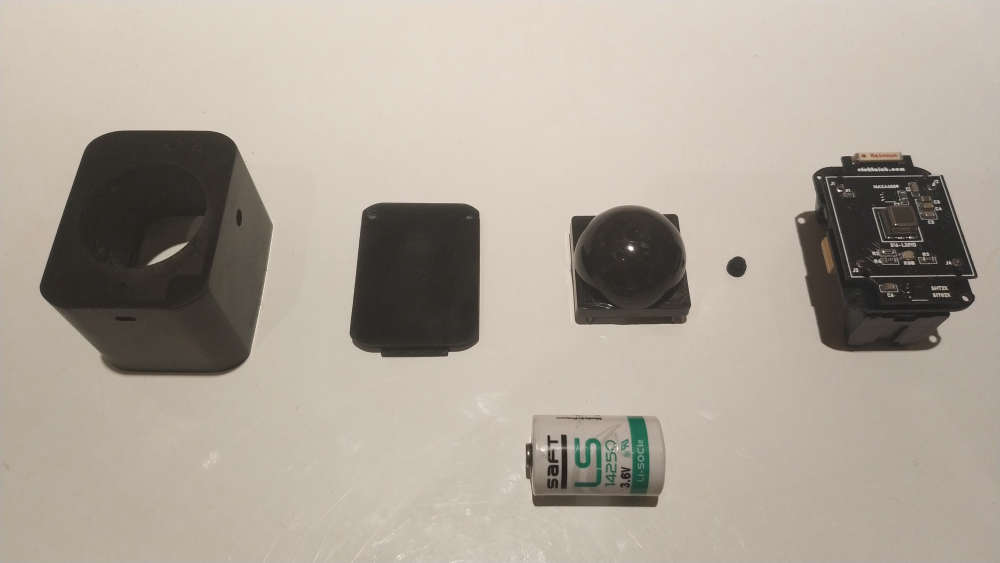






-
Not hardware though, but I'm working on my dashboard solution for a wallmounted tablet.
I kind of already have this working in angular, but lately I have switched to react (joined a new project at work where they use react for frontend development), so wanted to see how "easy" it would be to create a something similar to my angular dashboard, but in react instead.
Made a small screencast of the dashboard, and are now playing around with "fully kiosk browser" on an old android tablet. Next step is to create a wooden frame, so it doesn't look like a tablet that is mounted on the wall (for WAF'ines).
home automation tablet view – 02:07
— Thomas Bowman MørchAll data, except weather forecast and channel lists, is from my mqtt broker, where I use mqtt over websockets.I have a bunch of python scripts, and a node-red instance, to wrap things up for the display, and also do a lot of magical stuff, like turning on TV and amplifiers automatically when casting youtube, and then turn the TV etc. off again, when I haven't streamed anything for a couple of minutes. (So the kids doesn't forget to turn off the TV when they're finished watching cartoons)
-
Today i fired up my controller after 6 months houserenovation. Upgraded to new 2.3 version and instantly some old nodes started reporting again
 . Yes, there were some without battery but several temp and binary nodes survived 6 months without supervision.
. Yes, there were some without battery but several temp and binary nodes survived 6 months without supervision. 
-
@sundberg84 Out of curiosity, did you have battery powered Nodes trying to contact a dead controller or did you shut them all down?
When the Controller here died in June/July, the hit on Node voltage was quite spectacular compared to normal decay, in this instance the gas meter which was only supplying hot water and cooking...

-
@tbowmo said in What did you build today (Pictures) ?:
Not hardware though, but I'm working on my dashboard solution for a wallmounted tablet.
Sigh, this is on my todo list for a long time. I have a working solution with imperihome (gateway to imperihome implemented in node-red) but never get to mount the tablet.

I kind of already have this working in angular, but lately I have switched to react
Second sigh.... popularity of angular seems to decrease. Do I have to learn another framework?
(joined a new project at work where they use react for frontend development), so wanted to see how "easy" it would be to create a something similar to my angular dashboard, but in react instead.
...
All data, except weather forecast and channel lists, is from my mqtt broker, where I use mqtt over websockets.
Third sigh
 I like your chosen architecture except for the decision using websockets. (It is neither nice from a security standpoint nor is it proxy friendly, but who cares in a closed home enviroment.)
I like your chosen architecture except for the decision using websockets. (It is neither nice from a security standpoint nor is it proxy friendly, but who cares in a closed home enviroment.)I have a bunch of python scripts, and a node-red instance, to wrap things up for the display, and also do a lot of magical stuff, like turning on TV and amplifiers automatically when casting youtube, and then turn the TV etc. off again, when I haven't streamed anything for a couple of minutes. (So the kids doesn't forget to turn off the TV when they're finished watching cartoons)
I really like your project. Maybe you can publish some react code? (Then I can try t understand another ui framework...)
-
After 4 months of finishing the new house, i finally started to build in my sensors

Do need to build a new repeater, since a part of the sensors are out of reach.



-
A 3D printed hanger for dupont cables, mounted on the inside of the wardrobe that is my electronics lab.

Found it on thingiverse, https://www.thingiverse.com/thing:3567126
-
I was forced over to react, as the new project I was assigned to is using it (one of the downsides / luxuries of being in a large corporation). But yes, "Another framework". I can't decide if react is better than angular though. It's not as strict as angular on how to design things, but then the "strictiness" could be one of the strengths of angular.. I have experienced it a couple of times, where there are a lot of different ways to accomplish the same thing in react, so it's a bit harder to find the "Best way (tm)", whereas for angular it's a bit more strict path to implementations.
for the websockets, there might be security issues with it but if you want to have an open connection where you push data to the client, you don't have that many options available. I have thought about ditching mqtt for the frontend, and implement my own (websocket) protocol. Mainly to limit access to my mqtt broker, but there is only so many hours a day, and work, wife, kids etc. all want a part of them..

The project is already on github, don't expect anything fancy though..
-
@mfalkvidd Neat! It's so obvious once you see it. This is something I need. I have a box full of dupont cables, but it always seems I can't find the right length gender combination.
I also have a wide variety of USB cables hanging on hooks. Something like this with wider slots would be a better solution.
Gonna have to get that 3d printer on day.
-
@Omemanti Looks really professional. Are these a commercial style of switch? Wonder if I could get something like that in the US.
-
@nagelc Its al from jung. Series AS500. Its hard for me to search for sellers in the US.. Google forces me to search in the Netherlands.
My understanding that the standard inwall boxes in North America are pretty different than in Europe /Netherlands . The types I use always look like this
But I'll share my kicad files on openhardware.io, only thing you have to do is change the backplate.
This sensor : link
Also made a repeater, but this one is fairly unsafe( I got zapped installing it
 ). I just got the PCB's for a safer version I hope I can post pictures when everything works.
). I just got the PCB's for a safer version I hope I can post pictures when everything works.
-
A relatively basic board, based on a cheap CDEByte module, some leftover iTead power supplies (with not so-well aligned footprint) and a PCA9555 to drive the SSRs directly. I have suspended ceiling with many light spots so I want to be able to control them either one by one (in small rooms with less than 8 spots) or by groups/area in bigger rooms. This will be hidden in the ceiling in an electric box so I have no size constraint and it was easy to respect the creepage/clearance distance and include slots.
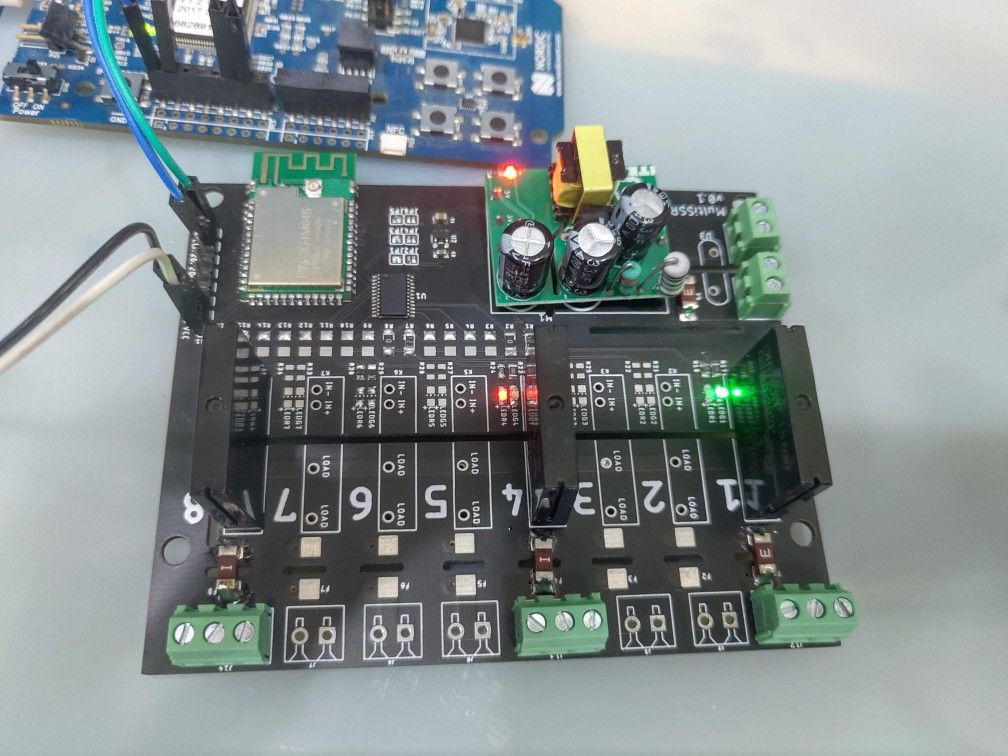

Resistors are the pullups for the I2C bus that I stupidely forgot (and yes I fixed that ugly solder point for the middle SSR)
(and yes I fixed that ugly solder point for the middle SSR)Result in Things Gateway:

-
@Nca78 Looked at another way, once installed and sealed up it will also be a sort of time capsule.

-
@NeverDie said in What did you build today (Pictures) ?:
@Nca78 Looked at another way, once installed and sealed up it will also be a sort of time capsule.

I said hidden and not sealed. Unless you have worked really hard on the FOTA for nrf52 ?

-
Not so much a build as a case study in deploying Mysensors with Domoticz to solve a puzzle simply with heating.
Having retrofitted insulation 2 years ago to my relatively modern house (2013), seeing gas consumption plummet to 55% of previously was a joy. The unknown thermostatic valves and heads were replaced with Heimeier Eclipse and Halo devices a year ago and an undersized Lounge radiator replaced (all paid for out of the first year's savings). The original intent of electronic zone control was abandoned when prices rocketed since the original goal was it being self-funded by first year savings, so a Honeywell multi$ was nowhere on the cards in any instance.
As Honeywell and other modern valve manufacturers have manufactured for thermostatic control, the Eclipse is essentially a dual flow control valve, one part replicating the return or lockshield valve (which is left fully open), the other the thermostatic control. On paper the Eclipse offered the secondary advantage of being pressure agnostic per kW panel, you set the flow and it stays that way.Delighted though I was to break 50% savings over the original thereafter with rooms remaining within a 1.1c band, there were some rooms colder than were set which made me realise there was some imbalance which I didn't realise then was the transit time from boiler to radiator (or miscalibrated valves).
First step was smart in but stupid out, monitoring the boiler by attaching DS18B20s to the connection nuts. Outgoing measured temperature being 10c below the boiler setpoint should have given a clue, but a week of running round like a lunatic with a laser thermometer and a notebook proved I was none the wiser other than the radiator was hotter than the boiler sensor.
Hence deployed this, a temporary hookup of two DS18B20s on perfboard connected with Cat 5e and phone cable and held with hot glue, two G clamps and some cardboard to ensure they stayed put, and a roving Node...
![20200119_182618[1].jpg](/assets/uploads/files/1579454832610-20200119_182618-1-resized.jpg)
Not elegant but dysfunctional (hot glue struggled under heat and pressure including having to be levered off the radiator) but it enabled the problem to be identified, transit time... Being able to monitor both the top and bottom panel temperature in relation to the main rads helped nudge the time to get incoming temp close to that taken to hit the main rads +/- 1 minute within a cycle time of 18 minutes...
Not elegant, and Domoticz is useless being built around 5 minute intervals, but it still enables readings to be taken with a notebook and pen in one hand with a glass of Rioja in the other Creeping up on it.. The improvements are felt before they are observed.
Creeping up on it.. The improvements are felt before they are observed.
My point is, a temporary Node can serve a lot of useful purposes leading up to or supplementing the permanent structure.
The screenshot is two different targets being tweaked...

-
@zboblamont Ah, you got bit by my main reason for not liking Domoticz: Domoticz would be so much more useful without that 5 minute minimum between recorded datapoints. It's a wonder they've never fixed that.
-
@Nca78 Just FYI, I looked into attempting a FOTA on the nRF52 but at the time I didn't feel as though I had enough easy-to-follow information to do it within the limited spare time available. I think adafruit may have some kind of FOTA for the nRF52 with their circuitPython project, but that language's runtime is awfully slow compared to C or FORTH.
-
@NeverDie I don't mind it so much as an overview, it's getting sense of the overview which is the problem as the detail is absent from the graphing.
Simple enough for my purposes though, sitting in a kitchen with a glass of Rioja recording details is remarkably simpler than spilling a perfectly good wine dashing back and forth balancing a notebook, pen, laser thermometer and a clock..
We work with the tools we have, which on balance are a lot more advanced than when I was your age when flints, candles and acetylene were all the rage...
-
@NeverDie I came to this idea after I read again about your trying to add FOTA to nrf52. What do you think about it?
-
@monte I think it may run into the same barrier I encountered with both uPython and FORTH and uLISP. I got them all to do FOTA with nRF52, which is easier because they are interpreted, but in none of the cases could I easily leverage the wonderfully extensive arduino sensor libraries because those are written in C. Apparently there do exist ways to do it with linkers and such, but I wouldn't classify it as easily done. More like "easier said than done." uLISP would have been the easiest to adapt C-libraries, but it's a slow inefficient implementation of LISP, so that was a downside. Although practically anything can be made to work given enough time and effort, there's something to be said for staying within the Arduino framework so as to minimize time and effort.
That said, maybe your idea is different. Sometimes it's hard to really know until you explore it a bit.
-
@NeverDie I mean, what exactly use scenario for FOTA update of a remote working node? What can you possibly want to change remotely without changing any hardware? I guess it can be some logic, or parameters that may require adjustment that can be made remotely, and that's how I think JSON can be used to specify those. I well may be overlooking the big part of a problem, so I ask to better understand it.
-
@monte said in What did you build today (Pictures) ?:
@NeverDie I mean, what exactly use scenario for FOTA update of a remote working node? What can you possibly want to change remotely without changing any hardware?
for example arduino core used for the firmware (sdk..), libraries updates (MySensors, sensors), etc
-
@scalz but why do you need this on an already working node? Mysensors has backward compatibility so far. Do you expect any improvements from updated sensor libraries for a working node? In this case, you of course would need proper FOTA.
-
@monte said in What did you build today (Pictures) ?:
@scalz but why do you need this on an already working node? Mysensors has backward compatibility so far. Do you expect any improvements from updated sensor libraries for a working node? In this case, you of course would need proper FOTA.
I don't think that a major fw release (MySensors in this case) always guarantees full backward compatibility.
Perhaps not for a sensor lib (but who knows), still, if not for any core updates, do you expect any improvements from updated MySensors lib for a working node/network? If no, then you don't need fota
app settings != app/fw update[edit]
Examples when you may need to flash your fw (wirelessly or with a programming tool):- it was not possible to have backward compatibility between old and new rfm69 drivers (new driver brought lot of improvements for green rf like adaptive TX power, power consumption etc).
So it required updating network (gw and all nodes). This can happen eventually for a major release (v2->v3 or v3->v4..), a major release could allow "controlled" breaking change if no other way. - bugs fixes in MySensors files (core, transport, security..)
- new features updates if needed (in MySensors, or your own sketch), easy to imagine, so many things to improve
- etc
- it was not possible to have backward compatibility between old and new rfm69 drivers (new driver brought lot of improvements for green rf like adaptive TX power, power consumption etc).
-
@scalz as time goes I'm becoming more "Ain't broke, don't fix it" guy. Let's say, you've installed relay node somewhere outdoors, that has been working for a couple years. What exactly would you want to improve by reflashing it with updated library? Or maybe not a relay, but any other node, you have in mind, that could benefit from this action.
Once again, I don't want to argue, just clearing things out for myself.
Thanks
-
@monte I get it. I think this is off topic here, maybe open a new thread if you need to ask people why/when they need to update their systems, reflash their devices etc
( I have edited my previous reply with a few more examples in case it would be more clear)
-
@scalz I agree that this conversation is off topic, and I indeed started a separate thread before I posted replies here. Fell free to express your thoughts here, if you want: https://forum.mysensors.org/topic/10895/modular-sketch-to-be-configured-with-json-idea/